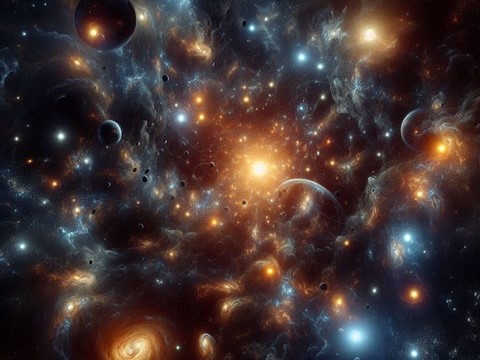For us mere mortals, how astronomers can estimate the mass of the universe is imponderable, but let’s just accept that they can. And when they do, they find that most of it is missing. They deduce there’s something there — huge gravitational forces — from the motion of enormous clusters of galaxies and how they spin.
But What? In the absence of a substance, it’s dubbed dark matter.
According to David Kaiser, Professor of both history and physics at the Massachusetts Institute of Technology (MIT), missing mass can be nailed down pretty precisely: for every kilogram of matter, there are more than five kilograms of dark matter. Following the Big Bang which started everything, he writes in the June London Review of Books, that without dark matter everything else would have just continued flying outwards and be diluted.
But something big and gravitational pushed it together, clumping it into stars and galaxies. Without dark matter, no galaxies and no us — but no evidence of dark matter. Very frustrating. What can it be?
There are theories.
Perhaps it’s elementary particles that have gravity but are impervious to light. There are various contenders: huge but weak particles or minute ones trillions of times lighter than an electron (which itself consists of almost nothing). But despite hugely expensive experiments like Xenon and the Lux-Zeplin Dark Matter Experiment and nearly 30 years of searching for the mystery particles: nothing.
Could dark matter be ordinary matter trapped inside black holes from which no light can escape? Such holes in otherwise law-abiding space were a controversial speculation until 2018 when a team at the Event Horizon Telescope photographed a huge one at the centre of Galaxy M87 more than 50 light years away.
Read more in Daily Maverick: How we captured first image of the supermassive black hole at centre of the Milky Way
 A black hole photographed by the Event Horizon Telescope. (Photo: EHT Collaboration)
A black hole photographed by the Event Horizon Telescope. (Photo: EHT Collaboration)
In 1939 J Robert Oppenheimer (he of the film Oppenheimer) postulated that a collapsing star could collapse space-time to the point where it could trap light rays and effectively disappear. It was considered an odd speculation — Einstein resisted the idea — and Oppenheimer went on to do other things, like build The Bomb.
Some 30 years later a Soviet astrophysicist, Yakov Zeldovich — also a weapons man — suggested that massive holes could have formed soon after the Big Bang. He called them primordial black holes. The British physicist Steven Hawking supported the idea, but few followed him at the time.
Then, in 2015, a team, using ‘gravitational lensing’, found the shadow of a black hole over six billion times the size of the Sun. Three years later the Event Horizon Telescope photographed one.
But could they contain dark matter? The physics gets very complicated here, but the conclusion after much research into giant, primordial black holes is: not enough to push around whole galaxies.
Maybe, then, it’s stored in countless swarms of microscopic holes? If so, that doughty little spacecraft Voyager 1, now flying beyond the Solar System and still signalling, would have detected them, but it hasn’t.
David Kaiser’s team, using lasers and reflectors on the Moon, has been looking for micro dark matter flybys. The experiment is ongoing and he’s hopeful, but nothing yet.
So here we are with some of the best brains on the planet absolutely certain that the universe cannot be explained without the presence of something they simply cannot find.
It seems appropriate to end with a word of advice from Winston Churchill:
“Success is stumbling from failure to failure with no loss of enthusiasm”. DM




 A black hole photographed by the Event Horizon Telescope. (Photo: EHT Collaboration)
A black hole photographed by the Event Horizon Telescope. (Photo: EHT Collaboration) 